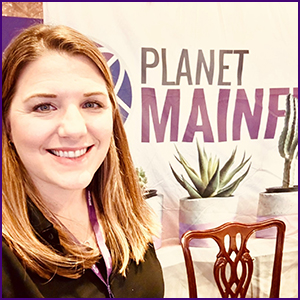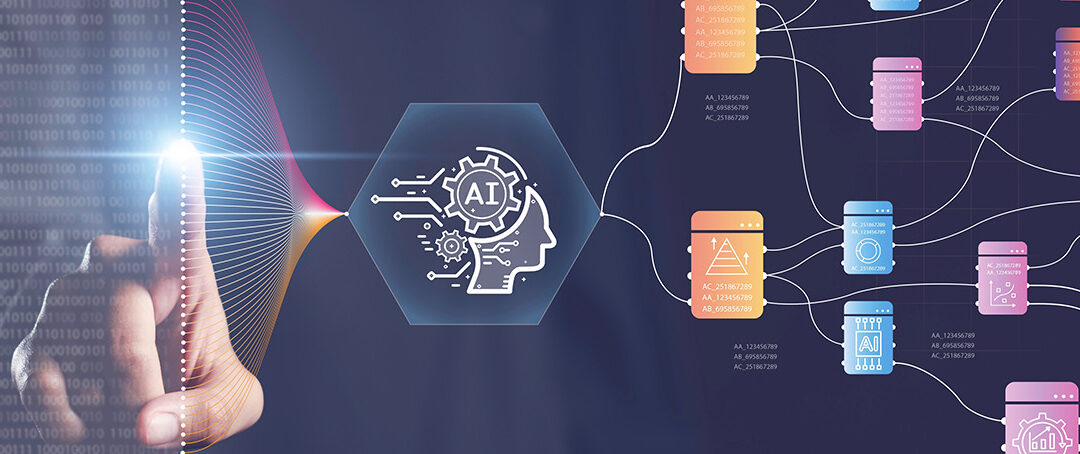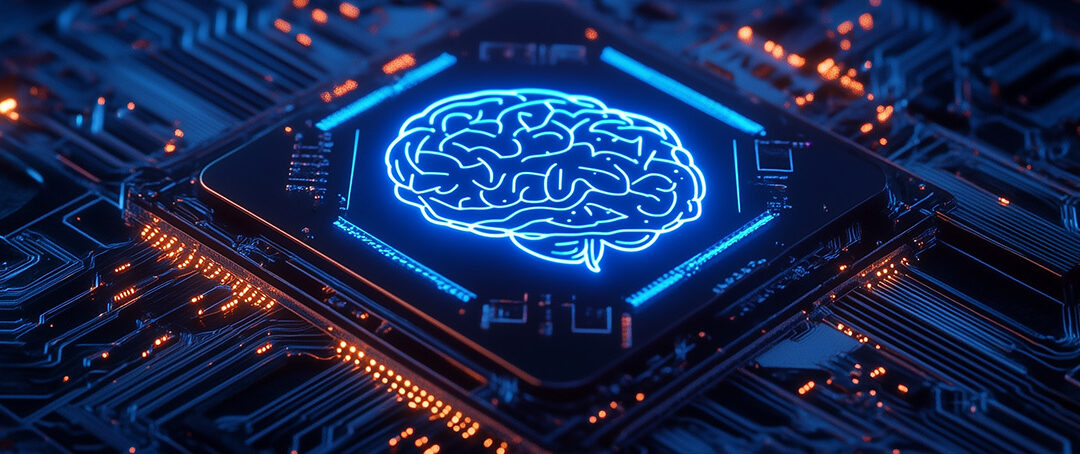In a recent interview at GSE UK 2024, Stuart McIrvine, Director of Product Management for Broadcom’s Mainframe Software Division, discussed the current state of the mainframe industry and emerging trends in AIOps and automation. With 35 years of IT experience, McIrvine reflected on the mainframe’s role as a reliable platform for critical global transactions, emphasizing its advanced hardware, computing power, and resilience. He addressed the misconception of mainframes being outdated, pointing out their continued relevance and the growing demand for skilled professionals.
A key focus of the discussion was the integration of AIOps and observability to enhance the mainframe’s reliability. McIrvine explained that AI helps identify and address potential issues before they impact operations, reducing downtime and improving system efficiency. Broadcom’s Watchtower Platform, introduced earlier this year, was noted as an example of how observability tools are evolving to provide actionable insights into system performance and data. Feedback from early adopters in industries like financial services and retail has driven the platform’s updates, including customizable dashboards and expanded data sources.
Looking ahead, McIrvine outlined how tools like Watchtower are evolving to provide deeper insights into mainframe operations, particularly for newer users. Enhancements to AI-driven triage processes are expected to help prioritize the most impactful issues and streamline resolution efforts.
Beyond specific tools, McIrvine discussed broader industry trends, including the increasing focus on interoperability between mainframe systems and other platforms, often facilitated by open standards. He emphasized the importance of continuous investment in skills and knowledge, advising those entering the field to build a strong foundation and explore specialized areas within the mainframe ecosystem. He also highlighted ongoing research into AI integration and ways to make mainframe systems more accessible and engaging.
McIrvine’s comments reflected the mainframe industry’s ongoing evolution, driven by both technological advancements and the need to adapt to changing business and operational demands.
Session Transcript
[01:00:09.200] – Amanda Hendley, Planet Mainframe
Today, I’m with Stuart McErvine, who is the Director of Product Management at Broadcom’s Mainframe Software division, and he is responsible for the AIOps and automation solutions. Welcome, Stuart.
[01:00:21.520] – Stuart McIrvine, Broadcom
Thank you. Great to be here.
[01:00:23.530] – Amanda Hendley, Planet Mainframe
Glad you could join us. Tell me a little bit more about yourself and what you do.
[01:00:27.590] – Stuart McIrvine, Broadcom
I’ve been around the IT industry for about 35 years now. Worked to IBM, HP, CA Technologies, and now Broadcom. I’ve got varied background. I actually started as a hardware engineer doing chip I’ve signed many years ago, software engineer, but I’ve really moved to the business side in the last 20 years. It’s hard to believe it’s been that long. But yeah, so I grew up in the UK. I now live in Raleigh, North Carolina, in the US.
[01:01:01.360] – Amanda Hendley, Planet Mainframe
You’ve been in the mainframe space a while. A long time. What do you wish people knew about the mainframe?
[01:01:08.600] – Stuart McIrvine, Broadcom
So one thing I think that there’s a lot of rumor around the industry, Oh, The mainframe is a dying platform. It’s growing, right? That’s one of the tremendous things about it. It has literally some of the most advanced hardware technology on the planet. We invest heavily. That’s one of the things is we’re investing more and more every year in the platform, but we do have a scarcity of skills. And that’s very important to understand. It’s a great place to be learning and working on a platform that does continue to grow, but there’s a shortage of skills. It’s a perfect place to be that you’re in demand when you have these skills. So I think there’s a few very important things to know there. It is a platform that has by far the highest computing power of any platform out there. And I think the key thing to remember is the quality of service that it delivers. Mainframes barely fall over. You know your laptop, blue screens all the time, right? And other platforms fall over, right? It is the most resilient platform out there as well. And that’s why the world’s most important transactions run on it.
[01:02:29.520] – Amanda Hendley, Planet Mainframe
And you specifically work with then AIOps and Observability. Why should we care about that?
[01:02:36.810] – Stuart McIrvine, Broadcom
The reason, so actually back to my very last point, which is pretty important, is maintaining that resiliency. You don’t want a platform that’s running the stock exchanges around the world, right? The world, 90% of the world’s banking transactions, you don’t want it to fall over. You want to maintain business continuity. Operations-wise, you want it to continue. That’s the area I focus on, is bringing AI, artificial intelligence into the operations software to make sure we maintain business continuity. When there is the hint of a problem, we want to get ahead of it before that problem causes an outage. That’s why it’s so critical. Ai operations is critical to business continuity for a mainframe. It keeps the platform up and running.
[01:03:31.800] – Amanda Hendley, Planet Mainframe
And earlier this year, at SHARE, Broadcom announced the Watchtower platform. What’s been the market reaction?
[01:03:41.720] – Stuart McIrvine, Broadcom
It’s been tremendous. So Watchtower is a platform. That’s our mainframe observability platform. Now, observability, in a nutshell, what that’s about, the mainframe has so much data, data about what’s going on, the operational health of the platform platform, everything else. Observability is really a focus on surfacing that data up so you get visibility into what’s going on. So the market reaction that we’ve had has been tremendous because before the availability of that information, the insight into the status of the platform really wasn’t there to that same level. Now, we get different customers or interests. And the great thing with the platform is there’s no one place you start and then grow into this end state. They can start from anywhere, so we get different reactions. I could go on for hours about the different areas. But I would say in a nutshell, having this visibility, surfacing this data, understanding more of what’s going on to head off problems has been critical for a lot of our customers. We see a great deal of interest in the financial services sector, but also retail as well. Again, a lot of financial transactions go on in that business. So that’s where that visibility, and it has helped a lot of our customers prevent outages where they wouldn’t have necessarily in the past prevented that outage.
[01:05:13.570] – Amanda Hendley, Planet Mainframe
Interesting. I imagine that because now you have customers using it, you’re getting a lot of feedback. How has it evolved? Have the capabilities changed since launch?
[01:05:25.350] – Stuart McIrvine, Broadcom
Yeah, that’s a very good question because that’s exactly how we operate. We brought out the platform, that’s version one, that came out in March of this year. And the whole point of, or one of the main points in doing that is to get our customers to help us evolve the platform. A few of those things that we’ve done since then is the launch in March allowed us to really look at a lot more of the infrastructure level. Feedback from our customers is they want to understand What’s going on at the application layer? These big business applications that run the business. So we’ve introduced some capabilities there where we can trace what’s going on within applications at that level. We actually added two capabilities. We’ve now recently launched dashboards that are customizable depending on the person’s role. So you get visibility into the application layer, profile of the application, etc, as well. So these have been two of the big steps forward. And then I would say the third area, so we have the dashboard, the application layer. And really the third day area is just enriching the data because we’re going to bring more and more data sources in to enrich what we present to the user so they get an even tighter view of what’s going on on the platform.
[01:06:49.100] – Stuart McIrvine, Broadcom
And that will we’ll continue to enrich that data part of it, too.
[01:06:53.360] – Amanda Hendley, Planet Mainframe
What’s next? What’s next on the roadmap, the watchtower?
[01:06:56.890] – Stuart McIrvine, Broadcom
You’re going to see Let’s say the AI and AIOps is going to continue to be very strong. You’ll see more of the AI coming forward because, again, what we’re dealing with on the mainframe in particular is enormous amounts of data. We need more insight into that because data is useless, unless you truly understand and turn that data into information. We’re going to use AI to get better insights in the data for many reasons. Some of it is just we understand there are new users coming to the platform. They don’t understand it as well as these 30- and 40-year experts. So we’ve got to provide more insights, help these end users more. So you’ll see a lot more of that coming out. We’re going to do more at the application space, that critical area in understanding more at the application level. And then I would say a third area is looking at now what is… Let me put it this way. You may get alerts on your system that say 200 things have just gone wrong. How do you know which one to pick? So helping understand What has more business impact? And therefore, how do I triage better and select the most critical problems that I need to deal with first?
[01:08:24.650] – Stuart McIrvine, Broadcom
All of that comes back to my original point, understanding the data, getting more insights into the as we move forward.
[01:08:33.150] – Amanda Hendley, Planet Mainframe
For someone that’s new to the field, can you give a quick explanation of why this level of data is so significant now?
[01:08:46.900] – Stuart McIrvine, Broadcom
Well, the reason it’s significant, data is critical for understanding in everything, whether you’re on the mainframe or reading a book. So the more you can understand the data, and there’s no shortage of it on the mainframe. In fact, there’s more business data on the mainframe than any other platform, Windows, cloud, whatever you want to talk about. So you’ve got a rich source of information. Having the ability to understand that is very important, and we’ve got it coming from lots of different sources. I can correlate network data with storage data, and get a completely different perspective on what the problem was, and if I just look Let me put it another way. Let’s say I just looked at network data, and I’m looking at faults, and I’m looking at performance, two different areas. Now, I might see that I have a performance problem. No, let’s say I have a piece of networking equipment went down, and all the traffic goes through the only piece that’s left. Now I have a performance problem there because there’s way too much traffic. Now, I might look at that and say, I have a fault there. No, I don’t. It It’s slowing down, but it’s slowing down because the fault was over here.
[01:10:03.120] – Stuart McIrvine, Broadcom
The only way I can understand that is bringing these two domains, fault and performance, together to truly understand, No, the problem isn’t here. This guy is doing his work. The problem was over here. So then expand that into different domains. I’ve got storage, I’ve got network, I’ve got operations, database, whatever. When you start to bring all that together, do you understand, I hope, why it’s critical to get those insights, right? And that’s why the data is so critically important.
[01:10:34.440] – Amanda Hendley, Planet Mainframe
So what are some of the other… What are some emerging trends that you see shaping our industry?
[01:10:43.010] – Stuart McIrvine, Broadcom
I know I sound like a broken record, but it’s so AI is certainly-
[01:10:47.140] – Amanda Hendley, Planet Mainframe
Well, I was going to ask you to say without using the word AI, but no. But I think you can’t, right? Yeah.
[01:10:58.270] – Stuart McIrvine, Broadcom
What’s shaping? That is a big part of it. I’m going to keep going back to data and the understanding of data. Mainframe is a critical platform, but it’s good at doing a certain number of things, not everything. So the interoperability between mainframe and cloud and windows and Apple and everything else and mobile devices, that’s critical. So having the open standards and continuing to evolve those open standards is going to be a massive trend. We’re embracing it. Other vendors are certainly embracing that because we have to interoperate, intercommunicate across platforms. There’s no one company in the world that just sits on a mainframe or just sits on cloud. Well, you could argue that. Every company wants enterprise-wide visibility. Ai, I keep going over, data is critically important, open standards, especially especially for communication across platforms, so that companies can truly operate in what we call a hybrid IT world, hybrid being a hybrid diversity of platforms.
[01:12:11.970] – Amanda Hendley, Planet Mainframe
I think that Broadcom does a really great job at innovating. Can you give us some insight into how you stay ahead and keep innovating? What’s the process What’s the process or what’s the methodology you follow to keep thinking?
[01:12:35.190] – Stuart McIrvine, Broadcom
It’s probably a very boring answer, but hiring the best people. That has been critical for us. We’ve been very fortunate in A lot of us in Broadcom came from various other companies. If we managed to bring a lot of the top people in, that has been critical for us. Having the brains in the company, allowing innovation. We’re allowed spend time thinking about where we’re going next, following the trends. Another piece is, and again, it’s another boring answer, we’ve been very fortunate in Broadcom to have the investment. Mainframe is not a platform that you see many other companies investing in. We continue to invest in it. Imagine you’re some really bright professional coming into a new company and you’re being told, And by the way, we have the investment. We’re going to give you the time to innovate. It’s a perfect environment. Good people, investment, time to innovate. All of that coming together puts us in a very good place.
[01:13:38.800] – Amanda Hendley, Planet Mainframe
So with that, what advice would you give someone that’s new in just the mainframe space in general?
[01:13:46.110] – Stuart McIrvine, Broadcom
Coming in to learn the platform. That’s one of the things we do. When we bring new people in. There’s a very extensive seven-week, you go off-site, we put you up in a hotel. There’s a seven-week training Take advantage of that. You have to have a foundational knowledge in understanding this platform because most young people coming out of college, they don’t have that level of familiarity. So get used to that. Figure out what you really like, because again, it’s a vast platform. What area do you like? Do you like the network? Do you like the storage? And the one you like, then go specialize a little bit more. And as time goes on, diversify. Learning and the whole platform. And yeah, beyond that, if you can get that foundational knowledge, it’s a fun platform. It really is. It’s a great platform to work on. I know I’m biased, but…
[01:14:45.700] – Amanda Hendley, Planet Mainframe
So I think that professionals can probably grasp the mainframe and what it is and what it does because they interact with it on some level every day, whether they truly know it not. But explain the mainframe to me if I were a kindergarten.
[01:15:07.380] – Stuart McIrvine, Broadcom
Kindergartener? Okay. I would have to start from an area that they’re familiar with. They have a laptop or a tablet, an iPad or whatever. I would let them go, Look, that device or your phone, right? That device, everything is there in one unit. You have your screen, you have your keyboard, you have your engine, your processor that’s processing all the information. The mainframe is a little bit different, right? In that your keyboard is very distant from the mainframe. Now, one thing the device that you’re using is very good at is displaying information in a very graphically rich way. That’s not what the mainframe does. But what the mainframe does is it handles the calculations, and it does them very, very fast, way faster than any other device. So when I’m running a transaction, for a kindergarten, or if I If I wrote you a check, not that I write too many checks to a kindergarten, but if I wrote you a check, the bank has to move money from my bank to your bank. And doing the calculations and making sure the communication happened And the mainframe is extremely good and extremely fast at that.
[01:16:19.130] – Stuart McIrvine, Broadcom
But what it’s not good at is giving you nice pretty displays that you would have on your laptop. Okay.
[01:16:25.950] – Amanda Hendley, Planet Mainframe
Well, before we go, do you have any exciting upcoming projects that you can share with us?
[01:16:33.090] – Stuart McIrvine, Broadcom
I would be giving me my biggest secrets if I told you all the exciting stuff. But watch this space around AI. I think one of the things I’ve said before We will focus more on that application layer because that’s where the real business happens. Making sure we enable our customers to get a grasp on their critical business applications. So you’ll see that coming out more and more data sources. The more data… But it’s not about just bringing that hoard of data up. It’s bringing up the pieces that are important and getting the insights into that. So you’ll see a big part of that is the AI that I talked about at the beginning, right? So you’ll see more insights into data. And then we will continue to make it easier for people not experienced in the mainframe to be able to be operationally productive on the mainframe. So these are some of the key areas you’ll see that will evolve. Okay, great.
[01:17:38.320] – Amanda Hendley, Planet Mainframe
Well, Stuart, thank you so much for joining me today.
[01:17:40.570] – Stuart McIrvine, Broadcom
Oh, it’s been my pleasure. Thank you.









0 Comments